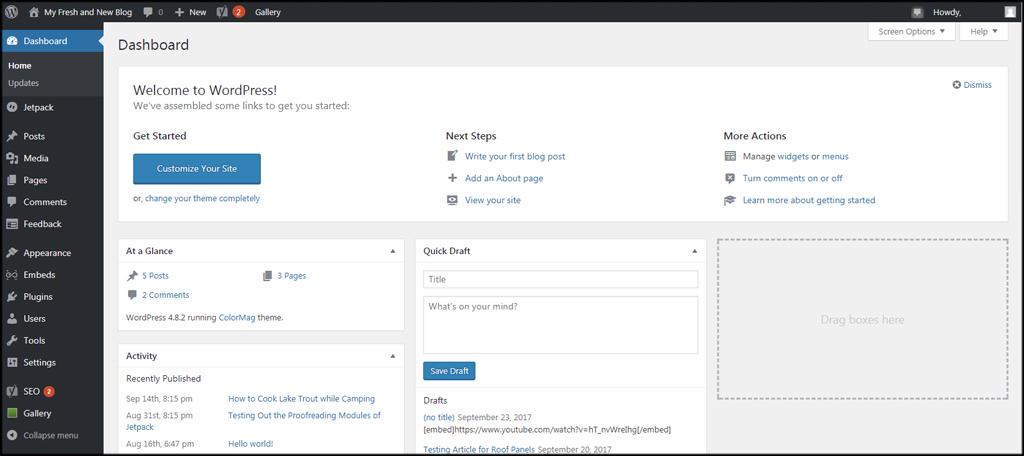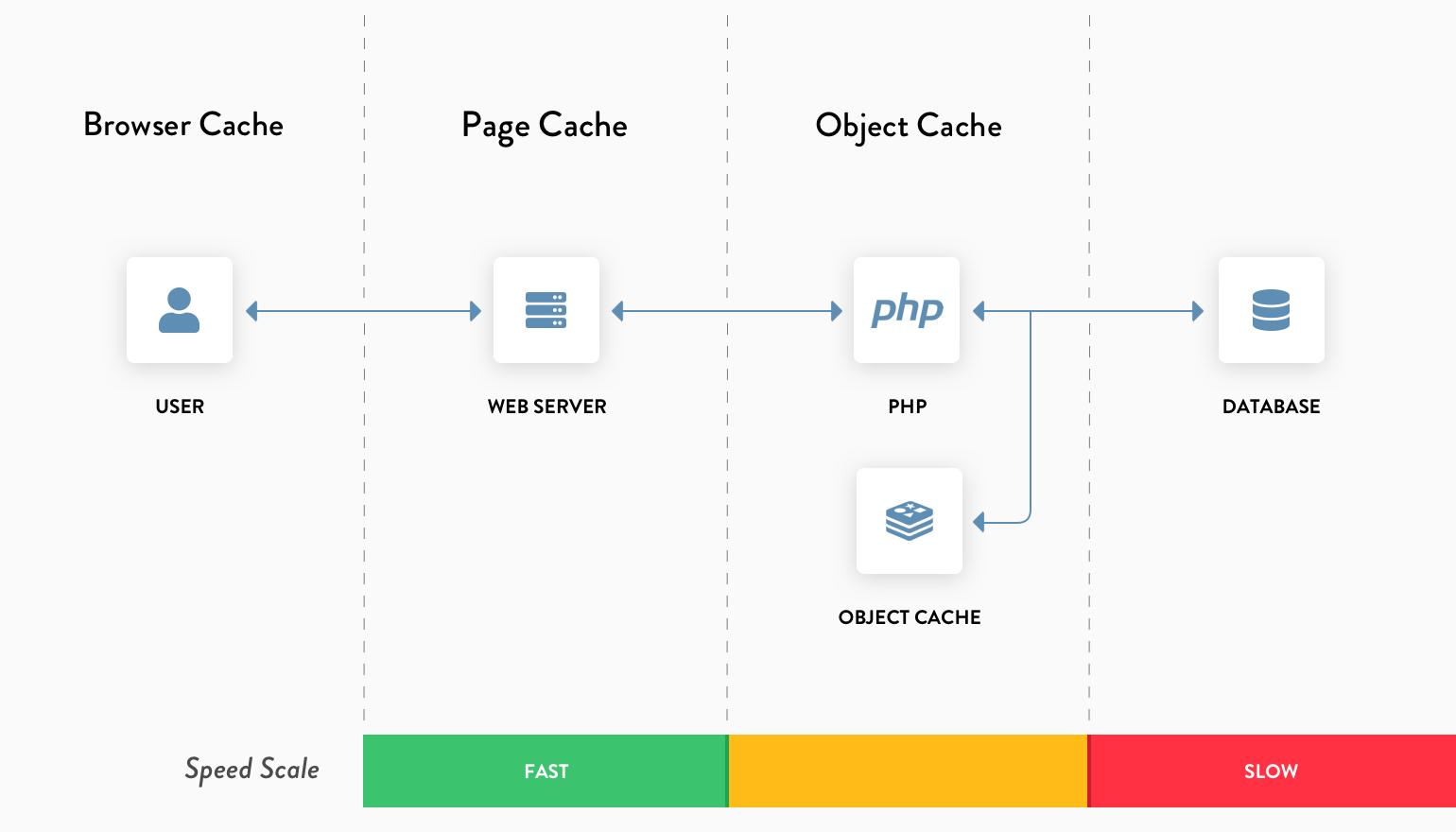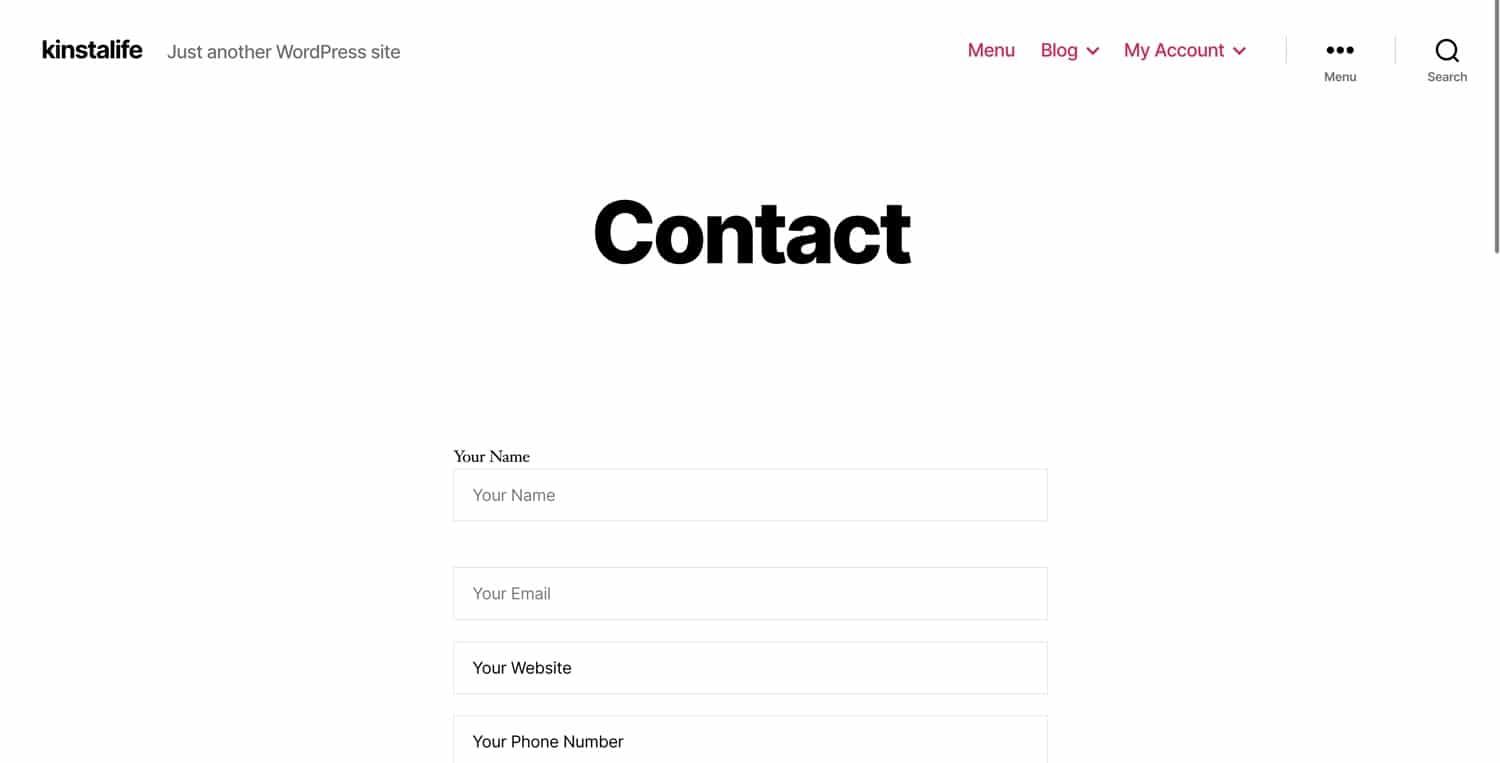
Are you ready to turn your passion for teaching into a thriving online learning platform? If you’ve ever thought about sharing your knowledge through courses, workshops, or training sessions, you’re in the right place! Creating a WordPress Learning Management System (LMS) website might sound like a daunting task, but it’s easier than you think. In this guide, we’ll walk you through the entire process—from brainstorming your course content to launching your site and attracting your first students. Whether you’re a complete newbie or a seasoned web developer looking to dive into the world of e-learning, our step-by-step approach will empower you to build a professional and engaging LMS that stands out in the crowded online education market. So, grab a cup of coffee, roll up your sleeves, and let’s get started on your exciting journey to becoming an online educator!
Choosing the Right Hosting Provider for Your LMS
When it comes to setting up your Learning Management System (LMS) on WordPress, the choice of hosting provider can make or break your project. A reliable hosting service not only impacts the performance of your site but also affects the overall user experience for your learners. Here are some fundamental factors to consider when :
- Performance and Speed: Look for a hosting provider that guarantees high uptime and fast loading speeds. A slow LMS can frustrate users and lead to higher drop-off rates.
- Scalability: As your course offerings grow, so will your traffic. Choose a host that can easily scale its resources to accommodate increasing numbers of students and courses.
- Security Features: Security is paramount, especially when handling sensitive information like student data and payment details. Opt for a provider that offers SSL certificates, firewalls, and regular security updates.
- Customer Support: Reliable customer service is essential. Ensure that your hosting provider offers 24/7 support, preferably through multiple channels like chat, email, and phone.
- Compatibility with LMS Plugins: Not all hosting platforms play nicely with LMS plugins like LearnDash or LifterLMS. Confirm that your host supports the specific plugins you plan to use.
One of the best ways to evaluate potential hosting providers is through their pricing plans. Here’s a quick comparison of popular hosting options that cater specifically to WordPress LMS setups:
| Provider | Starting Price | Key Features |
|---|---|---|
| SiteGround | $6.99/month | Excellent support, daily backups, free SSL |
| Bluehost | $2.95/month | 1-click installs, free domain for the first year |
| Kinsta | $30/month | Premium support, high performance, Google Cloud Platform |
| WP Engine | $20/month | Managed hosting, daily backups, staging environments |
Additionally, it’s worth reading customer reviews and testimonials. They provide real insight into the experiences other LMS administrators have had with specific hosting providers. Look for reviews that highlight their performance during peak times or their responsiveness to issues.
Lastly, consider the type of hosting that fits your needs best. While shared hosting may be cost-effective initially, it may not provide the performance needed as your LMS grows. Managed WordPress hosting or VPS (Virtual Private Server) hosting often strikes a better balance between cost and performance.

Selecting the Perfect WordPress Theme for E-Learning
Choosing the right theme for your e-learning platform can be a transformative decision that sets the tone for your entire website. A well-designed theme not only enhances the visual appeal but also plays a crucial role in the functionality and user experience of your Learning Management System (LMS). Here are some essential factors to consider when selecting the perfect WordPress theme for your e-learning site:
- Responsiveness: In today’s mobile-centric world, your theme must be fully responsive. This ensures that your courses and content look great on any device, whether it’s a smartphone, tablet, or desktop. Check the demo of the theme on different devices to see how it performs.
- User-Friendly Interface: A clean and intuitive layout makes navigation easier for your learners. Look for themes that prioritize usability, allowing students to find courses and resources without frustration.
- Customization Options: Flexibility is key. Choose a theme that allows for easy customization without the need for extensive coding skills. Look for built-in tools or plugins that enable you to tailor the design to fit your brand identity.
- Integration with LMS Plugins: Ensure that the theme is compatible with popular LMS plugins such as LearnDash or LifterLMS. This compatibility ensures seamless functionality and reduces potential conflicts.
- Support and Updates: Opt for a theme from a reputable developer that offers consistent updates and reliable support. This guarantees that your site remains secure and up-to-date with the latest WordPress standards.
Another important aspect to evaluate is the loading speed of the theme. A lightweight theme enhances the performance of your site, reducing bounce rates and improving SEO rankings. Utilize tools like Google PageSpeed Insights to test the theme’s speed and loading times.
Consider the color scheme and typography as well. The right colors and fonts can significantly affect the learning experience. Aim for a theme that supports customizable color palettes and offers a variety of font choices to enhance readability and engagement.
If you’re planning to offer multimedia content, look for themes that support video and audio integration. A theme that can seamlessly incorporate various media types enriches the learning experience and keeps students engaged.
| Feature | Importance |
|---|---|
| Responsive Design | Essential for mobile users |
| User-Friendly Interface | Improves navigation |
| LMS Compatibility | Ensures functionality |
| Loading Speed | Affects SEO and user retention |
Lastly, never overlook the power of reviews and ratings. Take the time to read feedback from other users who have utilized the theme for e-learning purposes. Positive testimonials and high ratings often indicate a reliable and effective theme.
the right WordPress theme serves as the foundation for your e-learning website. By carefully considering these factors and conducting thorough research, you can choose a theme that not only looks fantastic but also creates an engaging and effective learning environment for your students.
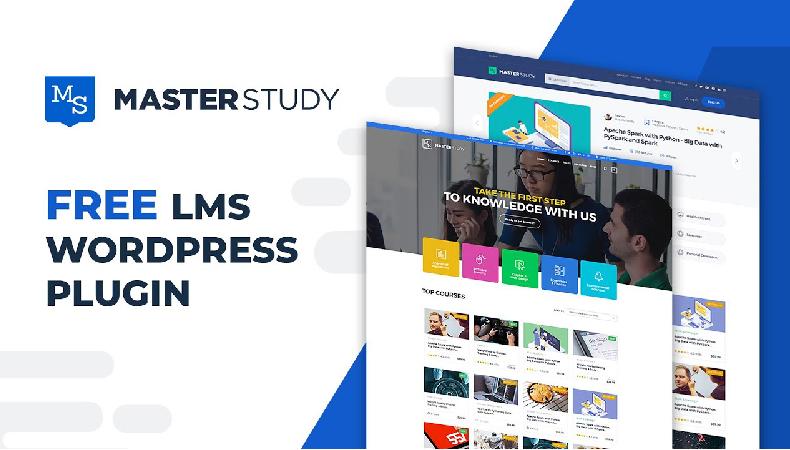
Essential Plugins to Transform Your WordPress into a Powerful LMS
When it comes to building a Learning Management System (LMS) on WordPress, the right plugins can make all the difference. They not only enhance functionality but also ensure a seamless learning experience for your users. Here’s a rundown of essential plugins that can help you transform your WordPress site into a powerful LMS.
LearnDash is often regarded as the gold standard for WordPress LMS plugins. Its extensive features allow course creation with ease, including:
- Advanced quizzing capabilities
- Drip-feed content options
- Student management tools
- Detailed reporting and analytics
With its intuitive interface, you can set up courses that engage learners and keep them coming back for more!
WP Courseware is another fantastic option that provides a drag-and-drop course builder, making course creation a breeze. You can easily:
- Create courses with modules and units
- Integrate quizzes and surveys
- Set prerequisites for courses
Plus, its integration with popular plugins like WooCommerce allows you to sell your courses effortlessly.
For those who prefer a more community-driven approach, BuddyPress can transform your LMS into a vibrant learning community. This plugin enables:
- User profiles and activity streams
- Group discussions and forums
- Private messaging between users
By fostering interaction among learners, you’ll create a dynamic environment that enhances the learning experience.
Don’t forget about WooCommerce if you plan to monetize your courses. This powerful eCommerce plugin seamlessly integrates with your LMS to:
- Manage transactions securely
- Offer subscription models
- Provide detailed sales reports
With WooCommerce, you can turn your educational content into a profitable venture.
To ensure your content is accessible and engaging, consider using H5P. This plugin allows you to create interactive content such as:
- Interactive videos
- Quizzes and games
- Presentations and timelines
By incorporating interactive elements, you’ll keep your students engaged and enhance their learning retention.
Below is a comparison of some of the top LMS plugins to help you decide which one suits your needs best:
| Plugin | Key Features | Pricing |
|---|---|---|
| LearnDash | Advanced quizzing, drip-feed content, reporting | Starts at $199/year |
| WP Courseware | Drag-and-drop builder, quizzes, prerequisites | Starts at $129/year |
| BuddyPress | Community features, user profiles, messaging | Free |
| WooCommerce | Payment gateways, sales reports, subscriptions | Free (with paid extensions) |
| H5P | Interactive content creation, quizzes | Free |
Choosing the right combination of plugins can elevate your LMS to new heights. With these tools, you’ll not only create an educational platform but also foster a thriving community of learners eager to gain knowledge.
Creating Engaging Course Content That Captivates Learners
When it comes to online courses, the content is king. Engaging course material can make all the difference in keeping learners interested and motivated. Here are some key strategies to create captivating content that resonates with your audience:
- Know Your Audience: Tailor your content to meet the needs and preferences of your learners. Conduct surveys or interviews to gather insights into what they want to learn and how they prefer to engage with material.
- Mix Media Types: Incorporate a variety of formats—videos, quizzes, infographics, and interactive elements—to cater to different learning styles. This diversity keeps the content fresh and stimulating.
- Storytelling: Use storytelling techniques to connect with your audience on an emotional level. Share real-life examples and case studies that illustrate key concepts and make them relatable.
- Break It Down: Avoid overwhelming learners with large chunks of information. Break your content into bite-sized lessons that are easy to digest. Use modules or chapters to structure the learning journey.
- Encourage Interaction: Create opportunities for learners to engage with the content and each other. Discussion forums, group projects, or live Q&A sessions can foster community and enhance the learning experience.
Additionally, consider the use of assessments to reinforce learning and provide feedback. Quizzes and assignments not only help learners gauge their understanding but also keep them accountable. Here’s a simple table to illustrate effective assessment types:
| Assessment Type | Purpose | Frequency |
|---|---|---|
| Quizzes | Test knowledge | After each module |
| Assignments | Apply concepts | Weekly |
| Peer Reviews | Encourage collaboration | Bi-weekly |
| Final Projects | Evaluate overall understanding | At course end |
Lastly, don’t forget to continuously update and improve your course content. Gather feedback from learners and make adjustments based on their suggestions. This not only enhances the learning experience but also shows that you value their input and are committed to their success.
Setting Up User Registration and Course Enrollment Processes
is crucial for the success of your WordPress LMS. By simplifying these steps, you enhance user experience and boost student retention. Here’s how to get started:
User Registration
To create a seamless registration experience, consider the following:
- Easy Access: Make the registration form easily accessible from multiple locations on your site, such as the homepage, course pages, and blog posts.
- Minimal Fields: Keep the registration fields to a minimum. The more fields you require, the less likely users are to complete the form.
- Email Verification: Implement email verification to ensure that users are entering valid email addresses.
Choosing the Right Plugins
WordPress offers numerous plugins that can help streamline the registration and enrollment processes. Here are some popular choices:
- LearnDash: A powerful LMS plugin that includes user registration features.
- MemberPress: Great for creating membership sites with robust registration capabilities.
- WPForms: Ideal for building custom registration forms with conditional logic.
Course Enrollment
Once users register, simplifying course enrollment is the next crucial step. Here’s how to achieve that:
- Clear Course Listings: Ensure that your course catalog is easy to navigate, showing essential information like course length, level, and prerequisites.
- One-Click Enrollment: Use plugins that allow users to enroll in courses with just one click after registration.
- Payment Gateway Integration: If your courses are paid, integrate reliable payment gateways like PayPal or Stripe for streamlined transactions.
Tracking Progress and Engagement
To encourage user engagement and track their progress, implement the following:
- User Dashboard: Provide a personalized dashboard where students can see their enrolled courses, progress, and upcoming assignments.
- Automated Notifications: Send reminders and notifications about course deadlines and new content via email or through your LMS platform.
Table: Key Features for User Registration and Enrollment
| Feature | Description | Benefits |
|---|---|---|
| Responsive Design | Forms and pages that work on all devices. | Improved accessibility for users on mobile. |
| Social Logins | Allow registration through social media accounts. | Simplifies the sign-up process. |
| Custom Redirects | Redirect users to specific pages after registration. | Enhances user journey and navigation. |
By implementing these strategies, you will not only enhance user experience but also drive course enrollments effectively. A smooth registration and enrollment process can set the tone for your learners’ journey, making it an essential part of your WordPress LMS.
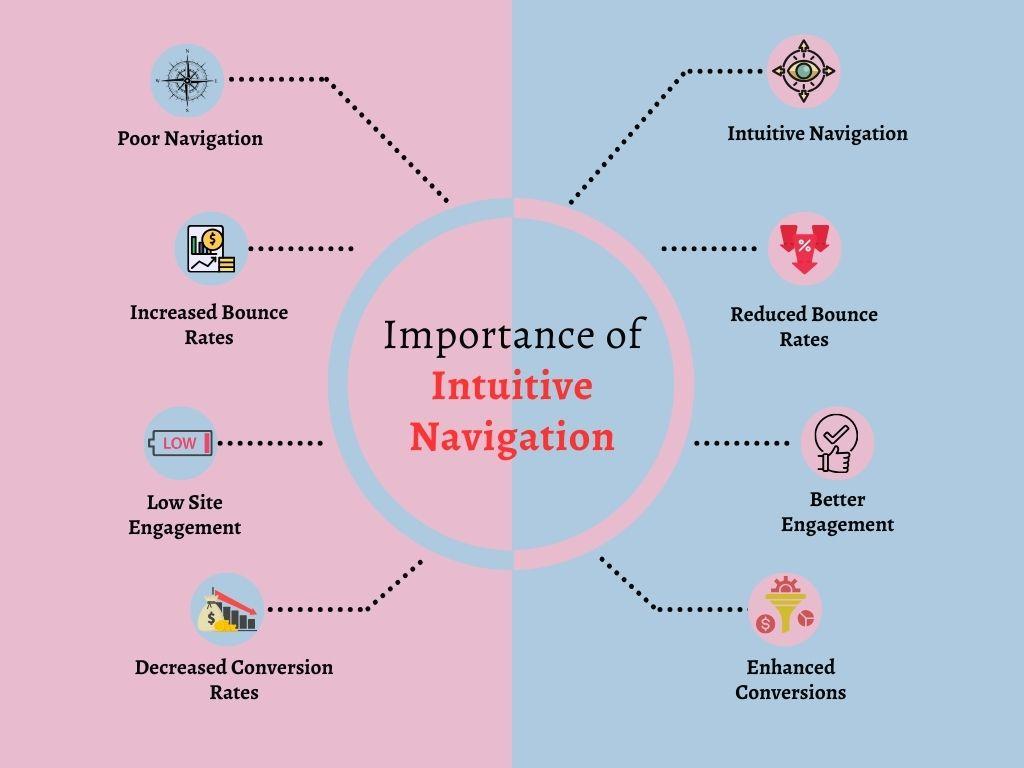
Designing an Intuitive Navigation for Enhanced User Experience
Creating a seamless navigation system is pivotal for guiding users through your WordPress Learning Management System (LMS) website. When users can easily find what they need, they are more likely to engage with your content and return for more. Here are some essential strategies for designing a user-friendly navigation system:
- Simplicity is Key: Keep your navigation menu straightforward. Limit the number of items to avoid overwhelming users. Aim for clarity over complexity.
- Logical Structure: Organize your content in a way that makes sense to your users. Group related topics together and use clear headings to define sections.
- Consistency Matters: Maintain a consistent navigation style throughout your site. This consistency will help users feel more comfortable and familiar as they explore your LMS.
- Responsive Design: Ensure your navigation is mobile-friendly. A significant number of users will access your site on mobile devices, so a responsive design is crucial for maintaining usability.
Consider implementing a mega menu if your site has a vast array of courses or categories. This allows users to see multiple options at once without excessive clicking. Here’s a simple table illustrating the benefits of mega menus:
| Benefit | Description |
|---|---|
| Efficiency | Users can quickly access various sections without navigating through multiple pages. |
| Visibility | Highlight special features or popular courses, making them more discoverable. |
| User Engagement | Encourages exploration, leading to increased course sign-ups and user interaction. |
Another effective strategy is to incorporate breadcrumbs in your design. Breadcrumbs provide a secondary navigation aid that displays the user’s path, making it easy to backtrack. This can significantly enhance the browsing experience, especially in a content-rich LMS environment.
Don’t underestimate the power of search functionality. A prominent search bar allows users to find specific courses or resources quickly, reducing frustration and improving satisfaction. Make sure the search feature is easily accessible from any page.
Lastly, consider user feedback. Regularly solicit input from your audience about their navigation experience. This can provide invaluable insights and help you make necessary adjustments. Implementing user suggestions not only improves the site but also fosters a sense of community among your learners.
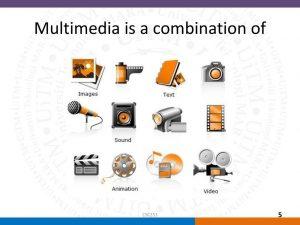
Incorporating Multimedia Elements to Boost Learning Engagement
To create an engaging e-learning experience, integrating multimedia elements is essential. By combining text with visuals, audio, and interactive components, you can capture learners’ attention and enhance their understanding of the material. Here are some effective ways to incorporate multimedia elements into your WordPress LMS website:
- Videos: Use short instructional videos to explain complex concepts. Platforms like YouTube or Vimeo allow easy embedding of videos into your lessons. This not only makes learning more dynamic but also caters to visual learners.
- Infographics: Presenting information visually through infographics can simplify complicated data and make it more digestible. There are many online tools available for creating stunning infographics that can be seamlessly integrated into your coursework.
- Podcasts: Consider adding audio content for learners who prefer listening over reading. Podcasts or audio summaries can be a great way to reinforce learning, especially for mobile users.
- Interactive Quizzes: Engage your learners with quizzes that provide instant feedback. Tools like Quizlet or your LMS’s built-in quiz functionalities can be utilized to create fun and educational assessments.
- Discussion Boards: Foster community and interactivity by integrating forums or discussion boards. This allows learners to collaborate, ask questions, and share insights, further enriching the learning experience.
When selecting multimedia elements, consider your audience’s preferences and the subject matter at hand. For instance, technical subjects might benefit from detailed video tutorials, while creative courses could thrive with vibrant visuals and student showcases. Ensure that any multimedia used is high quality; poor visuals or audio can detract from the learning experience.
Additionally, it is essential to maintain a balance. Overloading your content with too many multimedia elements can overwhelm learners. Instead, use a mix of formats strategically throughout the course to reinforce key points and maintain interest.
| Multimedia Type | Benefits | Best Used For |
|---|---|---|
| Videos | Enhances engagement and understanding | Complex concepts, demonstrations |
| Infographics | Simplifies information presentation | Data-heavy content |
| Podcasts | Flexible learning; good for auditory learners | Summaries, interviews |
| Interactive Quizzes | Immediate feedback; encourages participation | Assessments and review |
Moreover, leveraging tools like Canva for graphics, Audacity for audio editing, and Articulate for interactive content can significantly ease the process of content creation. With these options, you can ensure that your LMS not only educates but also captivates your learners.
don’t forget to analyze the effectiveness of the multimedia elements you incorporate. Utilize analytics tools to track engagement and performance metrics. This feedback will help you refine your approach, ensuring that your WordPress LMS continually evolves to meet your learners’ needs.

Implementing Quizzes and Assessments for Effective Learning
Integrating quizzes and assessments into your WordPress LMS is essential for tracking student progress and enhancing the learning experience. With the right tools and strategies, you can create engaging assessments that motivate learners to demonstrate their knowledge and skills effectively.
To get started, consider these key types of assessments you can implement:
- Multiple Choice Questions: A classic format that allows quick evaluation of student understanding.
- True/False Questions: Perfect for assessing knowledge of specific facts.
- Short Answer Questions: Ideal for encouraging critical thinking and comprehension.
- Interactive Quizzes: Use multimedia elements, like images and videos, to engage students.
When designing your quizzes, keep in mind the importance of clear instructions. Make sure that students understand what is expected of them. A well-structured assessment includes:
- Clear goals and objectives for each quiz
- A variety of question types to appeal to different learning styles
- Feedback mechanisms for students to learn from their mistakes
Incorporating timed assessments can add an element of challenge and urgency, motivating students to perform at their best. You can utilize features in your LMS plugin to set time limits on quizzes, creating a more dynamic testing environment.
To analyze the effectiveness of your assessments, consider using data tracking tools available in LMS plugins. These tools allow you to gather insights such as:
| Data Point | Importance |
|---|---|
| Completion Rates | Measures student engagement |
| Average Scores | Indicates overall understanding of material |
| Question Performance | Identifies areas needing improvement |
Remember to provide immediate feedback on quizzes. This not only motivates students but also enhances their learning by allowing them to understand where they went wrong and how they can improve next time. Consider using plugins that automatically provide feedback based on answers, saving you time and effort.
don’t forget to gather student feedback on your quizzes and assessments. This can be invaluable in refining your approach and ensuring that your assessments are both fair and effective. You can include a short survey after each quiz to capture their thoughts and suggestions.
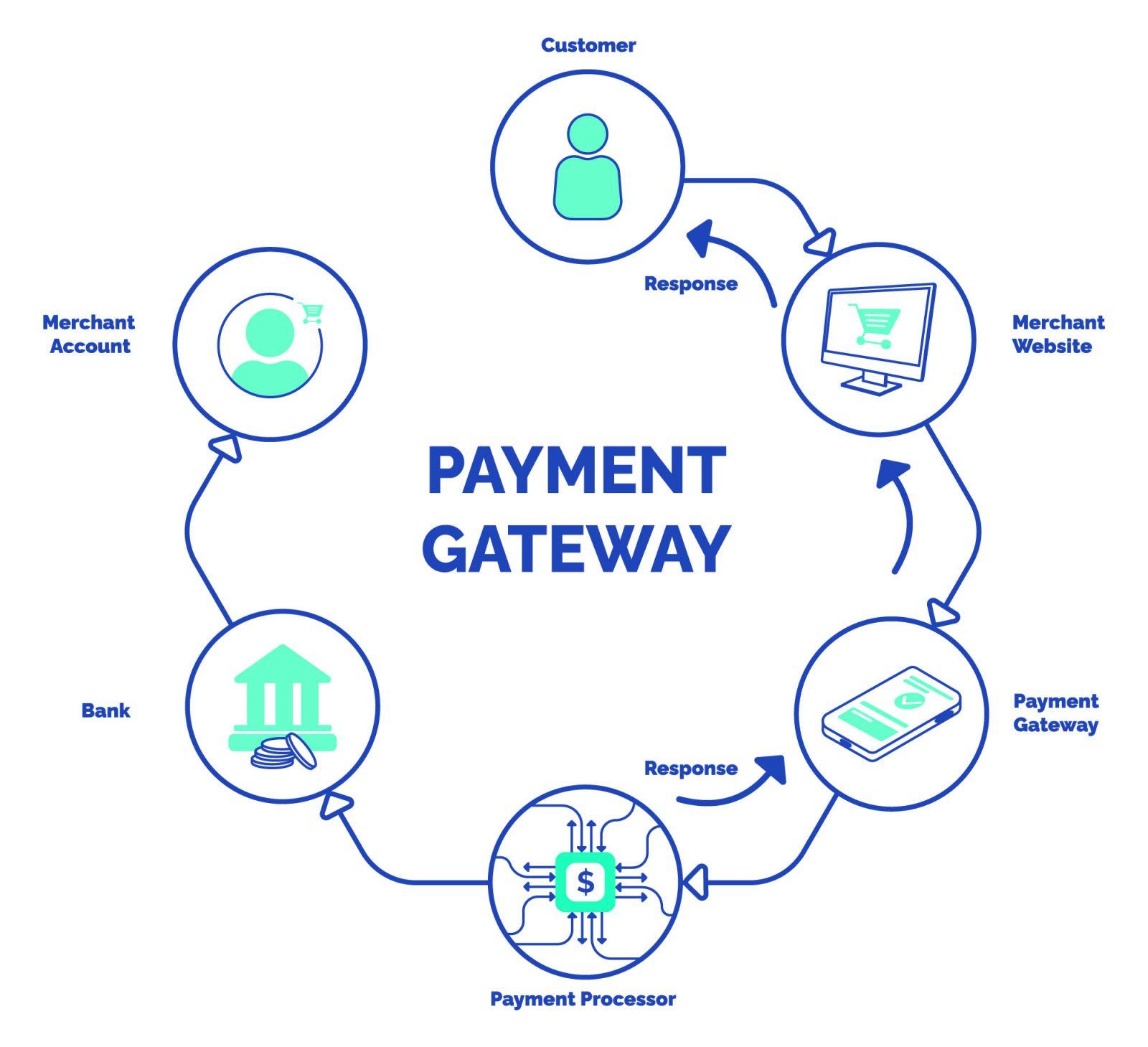
Establishing Payment Gateways for Seamless Transactions
Setting up payment gateways on your WordPress LMS website is crucial for facilitating smooth transactions and enhancing user experience. The right payment gateway not only helps in processing payments efficiently but also builds trust with your clients. Here’s how to go about it:
First, you need to choose a payment gateway that is compatible with your LMS. Here are some popular options:
- PayPal: Widely recognized and trusted, PayPal offers various options for businesses.
- Stripe: Known for its developer-friendly interface and extensive features.
- WooCommerce Payments: Ideal for those already using WooCommerce for e-commerce solutions.
- Authorize.Net: Great for businesses needing advanced fraud protection features.
Once you’ve selected your payment gateway, the next step is to install the necessary plugin on your WordPress site. Most popular payment gateways have dedicated plugins that can be found in the WordPress Plugin Repository. Here’s a simple process to follow:
- Navigate to your WordPress dashboard.
- Go to Plugins > Add New.
- Search for your chosen payment gateway plugin.
- Click Install Now and then Activate.
After activating the plugin, you’ll need to configure it. This generally involves:
- Entering your API keys or merchant account details.
- Setting your currency options.
- Customizing payment buttons and check-out styles to match your site’s design.
For a more detailed configuration, many plugins provide documentation or customer support. Don’t hesitate to refer to these resources to ensure everything is set up correctly. It’s also essential to enable SSL on your website for secure transactions. This can usually be done through your hosting provider or via a dedicated SSL plugin.
To provide transparency, consider setting up a transaction table that outlines the fees associated with each payment method. This can help students understand costs better:
| Payment Gateway | Transaction Fee | Setup Cost |
|---|---|---|
| PayPal | 2.9% + $0.30 | None |
| Stripe | 2.9% + $0.30 | None |
| WooCommerce Payments | 2.9% + $0.30 | None |
| Authorize.Net | 2.9% + $0.20 | $25/month |
test the payment process before going live. Create a test account or use sandbox mode available in most plugins to simulate transactions. This will help you identify any issues and ensure a smooth checkout experience for your users.
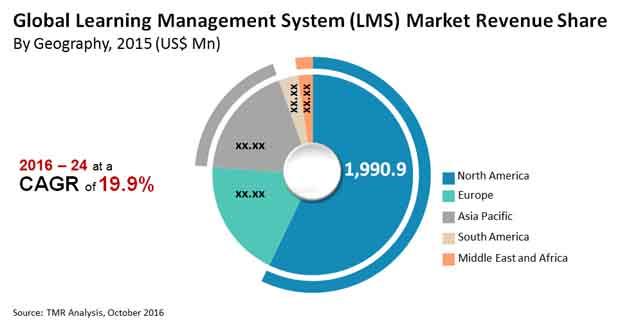
Marketing Your LMS Website to Attract Students
Once your Learning Management System (LMS) website is up and running, the next crucial step is to draw in students. With the right marketing strategies, you can significantly increase your visibility and enrollment rates. Here are some effective tactics to get you started:
- Optimize Your Content for SEO: Use relevant keywords that your target audience searches for. Tools like Google Keyword Planner can help you identify the best terms to incorporate into your content.
- Leverage Social Media: Create engaging profiles on platforms where your potential students hang out. Share valuable content, course updates, and testimonials to build a community around your LMS.
- Email Marketing: Build an email list from your website visitors and send them regular updates, course announcements, and special promotions to keep them engaged.
- Create Compelling Landing Pages: Design eye-catching landing pages for each course that clearly communicate the benefits and unique selling propositions. Make sure to include call-to-action buttons that stand out.
To effectively track your marketing efforts, it’s essential to leverage analytics tools. This will help you understand which strategies are working and where adjustments are needed. Consider using the following metrics:
| Metric | Description |
|---|---|
| Website Traffic | Monitor the number of visitors to your LMS site. |
| Conversion Rate | Measure the percentage of visitors who enroll in your courses. |
| Engagement Rate | Track how long visitors stay on your site and what pages they visit. |
| Email Open Rate | Evaluate how many recipients open your marketing emails. |
Don’t underestimate the power of word-of-mouth marketing. Encourage your existing students to refer their friends and offer them incentives, such as discounts on future courses. You could also create a referral program that rewards students for bringing in new learners.
Consider hosting free webinars or workshops that showcase your teaching style and the value of your courses. This not only positions you as an expert in your field but also allows potential students to experience your content firsthand.
consider partnerships with other organizations or influencers in your niche. Collaborating with them can introduce your LMS website to a broader audience and enhance your credibility in the market.

Monitoring and Analyzing User Engagement for Continuous Improvement
Understanding and optimizing user engagement is crucial for the success of your WordPress LMS website. By continuously monitoring and analyzing how users interact with your platform, you can make informed decisions that enhance their learning experience. Here are some effective strategies to keep in mind:
- Utilize Analytics Tools: Tools like Google Analytics and WordPress plugins such as MonsterInsights can provide detailed insights into user behaviors. Track metrics such as session duration, page views, and bounce rates to identify areas for improvement.
- Monitor Course Completion Rates: Keep an eye on how many users complete your courses versus how many start them. High drop-off rates may indicate that the material is too challenging or not engaging enough.
- Gather User Feedback: Encourage students to provide feedback through surveys or polls. Their insights can reveal what they enjoy and what aspects require enhancement.
Engagement metrics are not just numbers; they tell a story about your users’ experiences. Pay attention to the following key performance indicators (KPIs) to ensure your LMS is meeting its goals:
| Engagement Metric | Importance |
|---|---|
| Active Users | Indicates how many users are regularly engaging with your content. |
| Course Ratings | Reflects the quality of your courses as perceived by the learners. |
| Forum Participation | Shows how engaged learners are in discussions and community-building. |
Another effective way to boost engagement is by implementing gamification elements into your LMS. Consider adding features such as:
- Badges and Certificates: Reward users for completing milestones, which can foster a sense of accomplishment.
- Leaderboards: Create friendly competition by showcasing top learners, encouraging others to engage more actively.
- Quizzes and Challenges: Integrate interactive quizzes that not only assess knowledge but also keep users entertained.
Lastly, don’t hesitate to iterate on your courses based on the data you gather. A/B testing different course formats, content lengths, and teaching methods can provide valuable insights into what resonates with your audience. Remember, the ultimate goal is to create a dynamic learning environment that evolves based on user interactions and feedback.
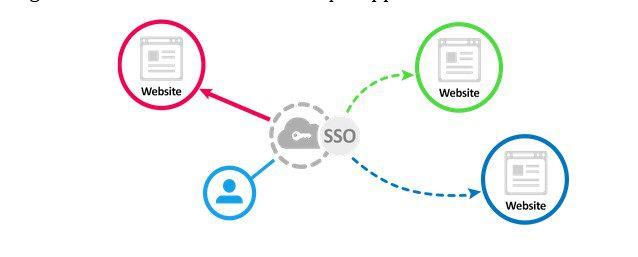
Keeping Your LMS Website Secure and Up-to-Date
Securing your LMS website is not just an option; it’s a necessity. As an online learning platform, you’re responsible for sensitive user data, including personal and payment information. To ensure your LMS remains a safe haven for your users, consider these essential practices:
- Regular Updates: Make it a habit to check for updates to your WordPress core, themes, and plugins. Outdated software can become a gateway for cyber threats.
- Strong Passwords: Encourage your users to create strong, unique passwords. Implement a policy that requires a combination of letters, numbers, and symbols.
- Two-Factor Authentication: Add an extra layer of security. Enabling 2FA can significantly reduce the risk of unauthorized access.
- SSL Certificates: Use SSL to encrypt data transmission. This not only secures user information but also boosts your site’s SEO.
Another critical aspect of maintaining a secure LMS is regular backups. In today’s digital landscape, having a backup is your safety net in the event of a security breach or data loss. Here’s a simple backup routine you can implement:
| Backup Frequency | Recommended Method | Storage Location |
|---|---|---|
| Daily | Automated Plugin | Cloud Storage (e.g., Google Drive) |
| Weekly | Manual Backup | External Hard Drive |
| Monthly | Full Site Backup | Remote Server |
Furthermore, implementing a security plugin tailored for WordPress can make a substantial difference. These plugins not only help you monitor your site for vulnerabilities but also offer features such as firewall protection, malware scanning, and login attempt monitoring. Some popular options include:
- Wordfence Security
- Sucuri Security
- iThemes Security
Don’t forget about user roles and permissions. Control who has access to what within your LMS. Assign user roles carefully and avoid granting administrative permissions to every user. By limiting access, you can minimize the impact of a potential breach.
Lastly, consider the importance of user education. Inform your students and instructors about best practices for online security. A well-informed user base can be your first line of defense against cyber threats. Hosting workshops or sharing resources on safe browsing habits can go a long way.
By prioritizing security and staying proactive with updates, backups, and user education, you are taking significant steps toward creating a reliable and trustworthy LMS website. Protecting your site is not just about technology; it’s also about fostering a safe environment for your learners.

Building a Support System for Student Inquiries and Feedback
Creating a robust support system for students is essential when building an effective LMS website. It ensures that students feel heard and valued, which in turn can enhance their learning experience and keep them engaged. To develop a comprehensive support structure, consider implementing the following strategies:
- Interactive Forums: Design forums where students can pose questions and receive answers from peers and instructors. This encourages a collaborative learning environment.
- Live Chat Support: Integrate a live chat feature that allows students to get instant help. This can be invaluable during crucial learning moments.
- Feedback Forms: Incorporate easily accessible feedback forms to gather students’ opinions on course content, website usability, and overall experience.
- Resource Library: Create a centralized library of resources, including FAQs, tutorial videos, and guides to help students navigate their learning journey.
Next, consider the importance of regular communication. Establishing a routine for updates and announcements will keep students informed and engaged. Here are a few methods to ensure consistent communication:
- Email Newsletters: Send out weekly newsletters summarizing important updates, new resources, or featured courses. This keeps students in the loop.
- Social Media Groups: Utilize platforms like Facebook or LinkedIn to create groups where students can interact, share, and seek help from one another.
- Virtual Office Hours: Schedule regular times when instructors are available to answer questions or provide additional support.
To effectively track inquiries and feedback, consider implementing a ticketing system or a dedicated dashboard. This allows you to manage requests systematically and respond to them as they come in. Here’s a simple layout of how you can structure your inquiry tracking:
| Inquiry Type | Status | Response Time |
|---|---|---|
| Technical Support | Open | Within 24 hours |
| Course Feedback | Closed | N/A |
| General Inquiry | Pending | 48 hours |
don’t forget to evaluate the effectiveness of your support system regularly. Use analytics to measure engagement and satisfaction rates. Conduct surveys to gather direct feedback, ensuring that your platform evolves according to student needs. This commitment to improvement will not only strengthen your LMS but also foster a community of trust and support among your learners.

Exploring Future Trends in E-Learning for Continuous Growth
Future Trends in E-Learning for Continuous Growth
The landscape of e-learning is constantly evolving, driven by technological advancements and changing learner preferences. To build a successful WordPress Learning Management System (LMS) website, it’s essential to keep an eye on these future trends that can enhance user experience and engagement.
Personalized Learning Experiences: As learners seek more tailored educational journeys, incorporating artificial intelligence into your LMS can pave the way for personalized content delivery. By analyzing user data, AI can recommend courses that fit individual learning styles and preferences, making the educational experience more relevant and engaging.
Micro-Learning: The trend of micro-learning focuses on delivering content in bite-sized chunks. This method caters to the busy schedules of modern learners and is perfect for your LMS. You can easily create short courses or modules that users can complete in a few minutes, improving retention and encouraging continuous learning.
Mobile Learning: With the increasing reliance on smartphones, your WordPress LMS should be mobile-friendly. Creating a responsive design ensures that learners can access course materials anytime, anywhere. This flexibility can significantly boost participation rates and completion times.
Gamification: Introducing game-like elements into your courses can drive engagement and motivation. Features like badges, leaderboards, and rewards systems can incentivize learners to complete courses and interact within the platform. Implementing gamification in your LMS could be a game-changer!
Social Learning: Fostering a sense of community among your learners can enhance the educational experience. Integrate forums or discussion boards within your LMS to promote collaboration and peer-to-peer support. This can create a vibrant learning environment where users feel connected and engaged.
Data Analytics and Reporting: Utilizing data analytics tools can provide insights into learner progress and course effectiveness. By tracking user behavior and performance, you can continuously refine and improve your offerings to meet the needs of your audience better.
Integration of Augmented and Virtual Reality: As technology advances, consider incorporating AR and VR features into your LMS. These immersive experiences can transform traditional learning methods and offer simulations that could greatly enhance practical learning opportunities.
| Trend | Description |
|---|---|
| Personalization | AI-driven content recommendations based on user data. |
| Micro-Learning | Bite-sized learning modules for busy schedules. |
| Mobile Learning | Responsive design for access on any device. |
| Gamification | Engaging elements like badges and leaderboards. |
| Social Learning | Community forums for collaboration and support. |
| Data Analytics | Insights on learner performance for course improvement. |
| AR/VR Integration | Immersive experiences for enhanced practical learning. |
By leveraging these trends in your WordPress LMS, you can create a dynamic and engaging learning environment that encourages continuous growth. Keeping your platform innovative will not only attract more users but also foster a culture of lifelong learning.
Frequently Asked Questions (FAQ)
Sure! Here’s a Q&A designed to engage readers interested in creating a WordPress Learning Management System (LMS) website:
Q: What is a WordPress LMS website, and why should I create one?
A: Great question! A WordPress LMS (Learning Management System) website is a platform that allows you to create, manage, and sell online courses. Think of it as your personal classroom on the web! Creating an LMS website can be incredibly rewarding, as it enables you to share your knowledge and expertise with learners globally, generate passive income, and build a community around your content. Plus, with WordPress, the process is more accessible than you might think!
Q: Do I need to be tech-savvy to build a WordPress LMS website?
A: Not at all! While some technical knowledge can be helpful, WordPress is designed to be user-friendly, especially with the right themes and plugins tailored for LMS functionality. Plus, there are countless tutorials and resources available to guide you through each step. If you can navigate a website, you can build an LMS!
Q: What are the first steps I should take to get started?
A: Start by choosing a hosting provider and registering a domain name. Look for hosting services that specialize in WordPress for optimal performance. Once that’s done, install WordPress and select a suitable LMS theme. From there, you’ll want to install essential plugins that enhance your LMS capabilities, like course builders and payment gateways.
Q: Are there specific plugins you recommend for creating an LMS?
A: Absolutely! Some of the top plugins include LearnDash, LifterLMS, and WP Courseware. These plugins offer powerful features like quizzes, certificates, and progress tracking. They also integrate smoothly with WordPress, making course creation a breeze. Don’t forget to explore additional plugins for SEO and security to ensure your site is well-optimized and safe!
Q: How can I create engaging content for my courses?
A: Engaging content is key to a successful LMS! Mix up your materials by incorporating videos, quizzes, and interactive elements. Consider using screen recording tools for lectures, and don’t hesitate to include downloadable resources. Also, keep your lessons concise and focused—this helps maintain your students’ attention and boosts their retention of information.
Q: What about marketing my LMS website?
A: Marketing is crucial! Start by establishing a solid social media presence to connect with potential students. Leverage email marketing to keep your audience informed about new courses and promotions. You can also consider content marketing—writing blog posts related to your course topics can attract organic traffic to your site. And don’t overlook the power of testimonials and reviews to build trust!
Q: How can I ensure the success of my LMS website in the long run?
A: Consistency is key! Regularly update your courses, engage with your students through forums or live Q&As, and seek feedback to improve your offerings. Additionally, keep an eye on industry trends and be willing to adapt your content and marketing strategies as needed. Building a successful LMS is a continuous journey, but it’s incredibly rewarding!
Q: Where can I find more resources on building my WordPress LMS?
A: There are tons of resources available online! Check out WordPress-related forums, YouTube tutorials, and blogs dedicated to LMS creations. Many LMS plugins also provide comprehensive documentation and support forums. Remember, the community is vast, so don’t hesitate to reach out for help when you need it!
With these questions and answers, readers will get a clear idea of what’s involved in creating a WordPress LMS website and feel encouraged to embark on their journey. Happy building!
Key Takeaways
Wrap-Up: Your Journey to an Engaging WordPress LMS
And there you have it! You’ve just navigated through the ins and outs of creating a WordPress LMS website from start to finish. It might seem like a lot at first glance, but remember, every great journey begins with a single step. By following the steps outlined in this article, you’re not just setting up a website; you’re building a platform that can empower learners and transform lives.
Imagine the satisfaction of seeing your first course launched, a community of eager students engaging with your content, and the impact you can make in your field. With WordPress, the possibilities are endless. The tools and plugins available today make it easier than ever to create a tailored learning experience that resonates with your audience.
So, what are you waiting for? Dive in and start creating! Whether you’re a seasoned pro or a complete newbie, you have the tools at your fingertips to make your vision a reality. Don’t hesitate to experiment, learn from challenges along the way, and watch as your LMS evolves into a hub of knowledge and growth.
If you have questions or need further guidance, feel free to reach out. The WordPress community is filled with passionate individuals ready to help you succeed. Here’s to your new venture—may it be exciting, rewarding, and, most importantly, impactful! Happy building!



